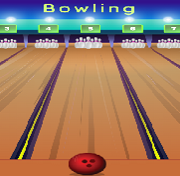Heart and Blood Circulation, Science Game
This science game will help you learn more about the heart and its role in blood circulation.
The Myocardium, Sinuatrial Nodes
A septum divides the heart into two chambers: the upper atria and lower ventricles. The largest chamber is the left ventricle, which has walls about a half inch thick and exerts force to push blood through its aortic valve. The blood flow is controlled by the tricuspid valve, which regulates blood flow to the right atrium from the right ventricle. The pulmonary valve regulates blood flow to the lungs.
Node in the Sinoatrial
The heart rate is controlled by the sinuatrial (or SA) node. Your heart requires more oxygen when you exercise. Your SA node will respond by increasing its rate of growth to compensate. This is often caused by higher sympathetic input. These symptoms are signs that you should visit your doctor. An SA node may be an indication of underlying medical conditions.
The heart's first component, the sinoatrial nude, is called the cardiac conduction system. It is composed of special cardiac muscle cells. It is located in the right atrium. It regulates the heartbeat's rate and rhythm, and sets the pace. It can cause heart failure if it is damaged. There are two options for treatment: medication or surgery. A simple shunt can restore normal heartbeat for most people.
Left ventricle
The largest chamber in the heart is the tricuspid valve. It has both the right and left leaflets. These valves work together to keep blood flowing. The tricuspid valve is the only heart valve in the right ventricle. Two other heart valves are found in the left ventricle. These valves control blood flow. Although the functions of the left and right ventricles may be different, they share many similarities.
One of the four chambers within the human heart is the left ventricle. The mitral valve allows it to receive oxygenated blood from left atrium. The aortic valve then pumps the oxygenated blood into the aorta. The left ventricle is longer and more elongated that the right and its walls are three-fold thicker. The ventricular lumen curves towards the aortic valve.
Tricuspid valve
Tricepid valves can become narrower and more rigid. This condition is called tricuspidstenosis. In severe cases, it may be necessary for a valve replacement or surgical repair. Surgery can be used to relieve symptoms and avoid complications. The replacement can improve your quality life and extend your life. This surgery is not for everyone. Make sure you understand what to expect before you undergo surgery.
Based on your medical history, and a physical exam, a health care provider will diagnose tricuspid valve diseases. A murmur, which is an abnormal sound caused by blood flow through the heart valve, is often a sign that the valve may be damaged. The doctor will usually order an echocardiogram. This is a procedure that uses ultrasound waves to capture the heart beating. It can be inserted into your chest or placed in your throat. Your doctor may recommend surgery to fix the valve if the murmur continues. This will involve either reshaping or replacing the valve's mechanical or biological leaflets.
Node atrial
The heart's electrical conduction system controls the heart rate by regulating the atrioventricular Node. The node sends electrical impulses throughout the heart muscle, stimulating the contraction of the atria. The sinus node, also known as the SA node, is located in the upper right atria. Special fibers transmit electrical impulses from this node to the ventricles.
The Atrial node is composed of three branches or bundles that run from the sinoatrial to the atrioventricular. The anterior tract runs along the interatrial septum and connects to the anterior portion of the atrioventricular. The posterior branch connects to the anterior part of the atrioventricular nude and continues inferiorly. Each branch is responsible only for one side.
Myocardium
Myocardium is primarily composed of cardiomyocytes (fibroblasts) that are distributed among the cells. The basement membrane is found in this tissue, which is rich in extracellular matrix proteins (ECM), such as collagen and glycosaminoglycans. Type I and type II collagens are the main structural ECM proteins, which are abundant within the myocardium. There are many other types of ECM, such as fibrillar collagen networks or glycosaminoglycans.
Contrary to these processes, ethanol treatment didn't increase the myocardium's amount of residual DNA and sulfated–GAG. Pressure and ethanol treatments also significantly decreased the size of the native myocardium. But, a macroscopic examination revealed that the matrix components had been preserved. This is a sign that the treatment was successful. It is difficult to detect parasites in the heart. However, this is an important part diagnostics.










